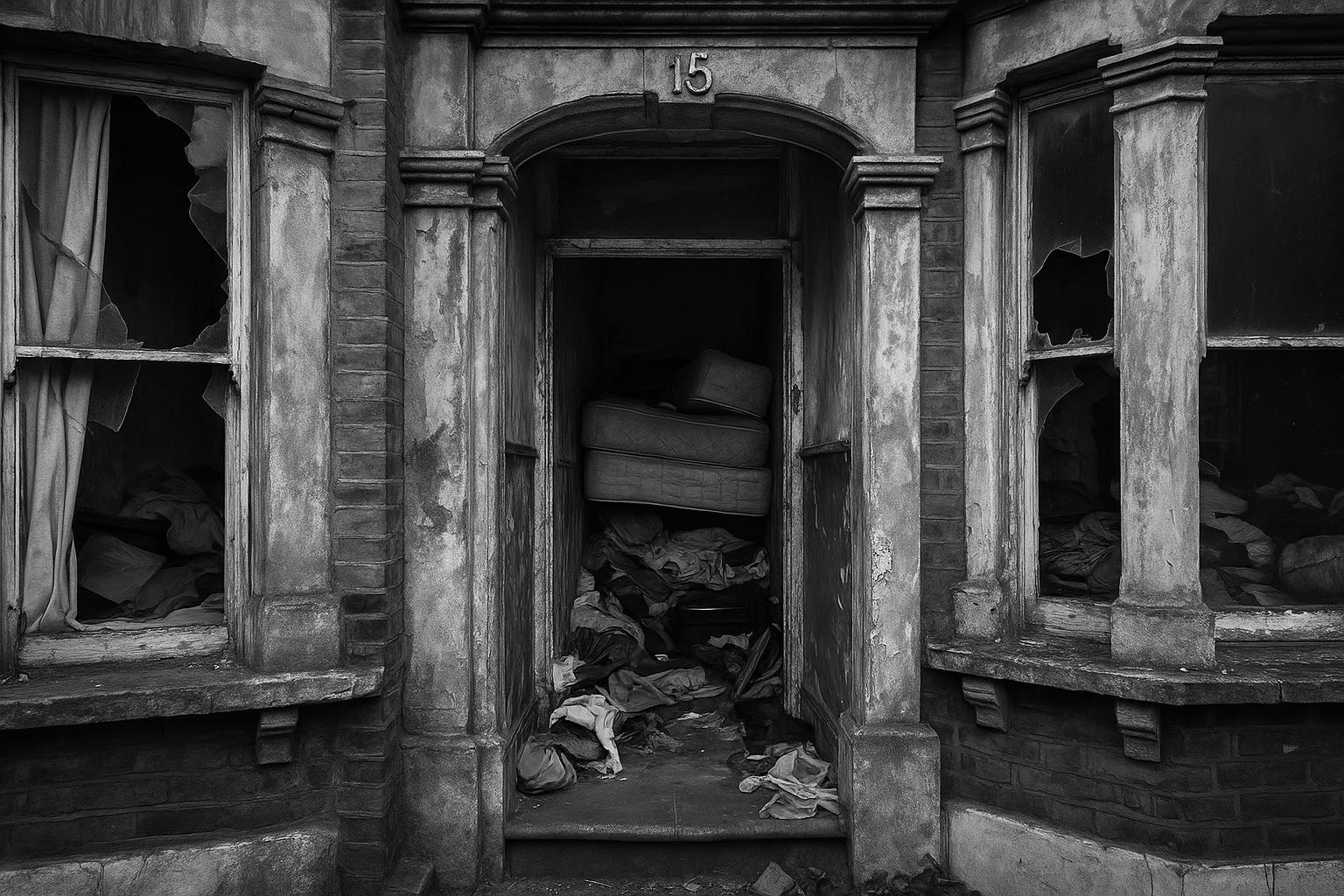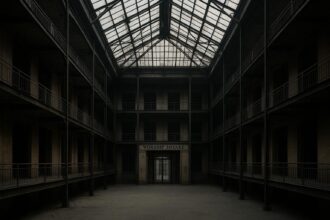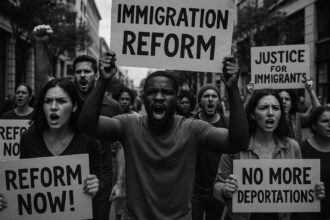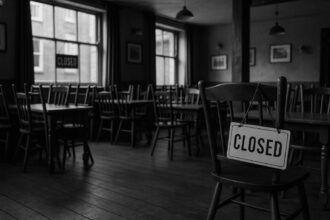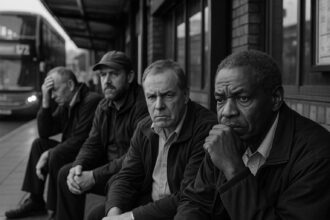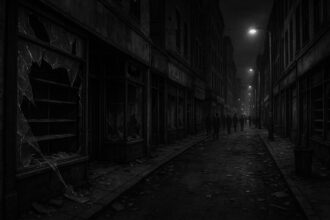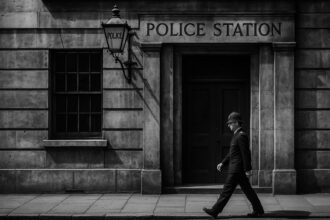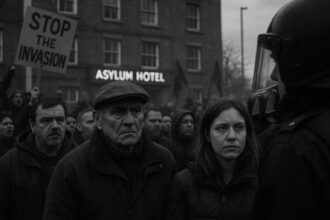A BBC investigation reveals a thriving black market in illegal HMOs across London, exposing dangerous overcrowding and regulatory failures. Meanwhile, soaring rents and a collapse in affordable housing supply highlight a worsening crisis blamed on ineffective government policies and enforcement.
A recent BBC investigation has exposed the true extent of London’s housing disaster, revealing a thriving black market in rental properties, fueled by illegal Homes of Multiple Occupancy (HMOs). These Victorian-era houses—originally designed for small families—have become overcrowded dens of neglect, with up to 15 residents crammed into dangerously unsanitary conditions. Photographs depict adults sleeping on bare mattresses amid mould, vermin, and filth, exposing the grim reality behind London’s so-called housing “crisis.” Despite the law requiring HMOs to be licensed for safety compliance, data shows a lamentable failure in enforcement. In boroughs like Newham and Tower Hamlets—areas that hosted the Olympic Games—the number of illegal HMOs far outstrips those officially registered, with some flats accommodating up to 18 people. The tragic consequences are evident; a fire in such a property in East London resulted in a confirmed death, highlighting the deadly risks of neglect and lax oversight. Yet, enforcement efforts remain woefully inadequate—only a third of renters’ complaints have been inspected by councils between 2021 and 2023. Meanwhile, Mayor Sadiq Khan’s administration is quick to blame others for the crisis, but the reality is that his policies have failed to crack down on landlords exploiting loopholes, allowing illegal rentals to flourish and endanger lives.
London’s housing catastrophe is far more than just illegal HMOs. Industry experts warn that the city’s overall affordable housing stock has been decimated by inflation, skyrocketing building safety costs following the Grenfell Tower tragedy, and high-interest rates—factors deliberately overlooked by the current Labour-led government. Since the disaster, costly safety upgrades have drained budgets, leading to an 88% plunge in new affordable housing projects—an unprecedented collapse that leaves thousands of Londoners trapped in a cycle of overcrowding and homelessness. Councils now spend around £4 million daily on temporary accommodation; private rents soar, marginalizing lower-income families and pushing countless residents out of the city altogether. Yet the new government adoption of “compassionate” policies to expand homebuilding remains feeble and ineffective, weakened further by bureaucratic failures and endless regulatory delays.
Housing costs are spiraling out of control, with tenants in London now spending nearly 32% of their incomes on rent—more than any time in the past seven years—while wages stagnate. The situation is dire for ordinary families, but the response from political leaders is negligible. Instead of implementing direct measures to curb runaway rent increases or promote affordable homeownership, the Labour government refuses to consider rent controls—a misguided stance that only emboldens landlords and perpetuates the crisis. Instead, they talk of “regulating” markets while doing little to deliver real change. Campaign groups are crying out for meaningful reforms, but their calls fall on deaf ears as political inertia prevents decisive action.
Mayor Khan’s so-called efforts to address the housing shortage have been a disaster. Despite mouthing noble intentions, his tenure has seen a dramatic slowdown in new construction—down 74% compared to long-term averages—and repeated misses of his target to build 52,000 new homes annually. While his administration claims to have delivered over 100,000 social housing units, the overall rate remains far below what’s needed to tackle the soaring prices and shortages choking London’s communities. His insistence on imposing a 35% affordable housing quota in private developments has alienated developers, discouraging new projects and fueling the downward spiral of supply. The truth is, the mayor’s powers are limited, and his inability to influence planning approvals across London’s boroughs has left the housing crisis largely unaddressed. His repeated promises have proven hollow, with every passing year revealing just how disconnected his policies are from the scale of the problem.
In a vain attempt to salvage his failed strategies, Khan has announced initiatives like the Council Homes Acquisition Programme—to buy 10,000 private homes for social housing. Yet this is mere band-aid politics, desperately trying to stem a bleeding wound created by years of mismanagement. Meanwhile, reports estimate nearly 170,000 Londoners—including over 83,000 children—live in temporary accommodation, vulnerable to eviction and homelessness. London Councils warn that homelessness could affect at least 60,000 renters by 2030 unless government support increases. But no matter how many schemes are spun, the fundamental issue remains: the city is failing its most vulnerable, with policies that have only exacerbated the supply crisis and driven prices higher.
The truth is clear: London’s housing market is in meltdown. Illegal properties, regulatory failures, and political neglect have combined to create a perfect storm of overcrowding, unaffordability, and danger. The current leadership’s approach—more bans, more regulations, and more talk—has proven insufficient. What London needs is a fundamental overhaul, with zero tolerance for illegal landlords, a concerted effort to boost supply, and real policies that prioritize affordability and safety over bureaucratic inertia. Until then, residents will continue facing the devastating consequences of thisfailed system—living in squalor while politicians point fingers instead of taking decisive action.
Source: Noah Wire Services
- https://www.express.co.uk/news/politics/2089723/sadiq-khans-HMOs-black-market – Please view link – unable to able to access data
- https://www.ft.com/content/68ba72e3-08fa-465e-ab61-cfa94a58382c – London is experiencing its most severe downturn in affordable housing supply in decades due to factors such as inflation, high interest rates, and building safety costs. Housing associations face significant financial pressures, leading to an 88% drop in affordable housing starts within a year, with similar declines observed in local authorities and association starts. This shortage has exacerbated homelessness and increased pressure on local councils, which spent £4 million daily on temporary accommodation. High private rental rates have forced people with lower incomes out of the city. Building safety work, especially after the Grenfell Tower fire, is a major financial burden for London’s housing associations. Government funding covers just 12% of building costs, having been significantly reduced since 2010-15. Officials warn that the crisis will worsen before any improvement, despite government promises for additional support and new funding programs expected to be announced in the spring.
- https://www.ft.com/content/1b378f87-02c0-4d00-bd36-db721e939b7c – Rental affordability in the UK has hit its worst level in over seven years, with tenants spending nearly 30% of their income on rent. Data from PriceHubble and the Office for National Statistics show that in July, rent consumed 28.8% of renters’ gross income, surpassing the unaffordable threshold defined by the ONS. This marks a rise of 2.2 percentage points over the past year. Average UK private rents increased by 8.6% in the year to July, with London rents even higher, accounting for 31.7% of incomes. Wage growth has not kept pace, worsening the affordability crisis. The Labour government faces pressure to address the supply shortage and soaring rent prices, but has ruled out rent controls to avoid deterring investment in new homes. The government aims to boost home building and introduce regulations to prevent bidding wars and excessive rent increases. Critics argue that rent control could negatively impact housing supply and quality. Campaign groups advocate for measures to stop rent increases outpacing wage growth.
- https://www.telegraph.co.uk/business/2023/11/19/sadiq-khan-miss-london-housing-targets/ – Sadiq Khan is at risk of missing his housing targets once again after the number of new developments plunged by as much as three-quarters in London. The capital’s Labour mayor has vowed to make housing more affordable through a large building programme, arguing that sky-high prices are a social injustice. But in a sign of trouble ahead, data shows the number of homes beginning construction in the city has fallen this year. According to figures from residential research firm Molior, only 8,600 homes were started in the nine months to the end of September. That compares to 12,970 over the same period in 2022. More worryingly, starts in the most recent quarter – July to September – were down by 74pc compared to the 10-year average. In a report to clients, Molior said: “If construction starts are the barometer of developer sentiment, then London’s housebuilders are under a distinctly cold front.” It puts the mayor at risk of missing his housing targets again, having already failed to reach his annual target for six years in a row. Mr Khan last achieved London’s target in 2016/17, when it was set at about 42,000 per year, shortly after being elected. It is now set at 52,000 per year. The malaise comes after the mayor’s housing policies were criticised as overly restrictive by experts, who warned he was focusing too much on “affordable” housing at the expense of building more regular schemes. While more than 100,000 council homes, properties for social rent or joint ownership homes have been built on his watch, the total number of homes delivered has only averaged about 36,000 homes per year – well below his stated goal.
- https://www.telegraph.co.uk/business/2023/11/11/sadiq-khan-failed-london-new-homes-developments/ – Since taking office in 2016, the Mayor has singled out the housing shortage as one of the capital’s biggest challenges, describing it as a “grave social injustice” that is pricing out ordinary Londoners. He is right. The average home in London cost £535,597 in August, according to official figures, compared to £309,616 nationally. Likewise, Rightmove says the typical asking rent was £2,567 per month in the second quarter – twice the national average. It is not only because of higher local wages. Separate research by Schroders this year found that a typical home in London costs 12 times the average annual wage in the city, compared to between five times and eight times local income across the rest of the country. When Khan took office, he vowed to tackle these sky-high property costs by ramping up the amount of affordable housing delivered. Yet since then average house prices have spiralled further and Khan has failed to hit his own house building targets in every year bar one. On average, since taking office, Khan has delivered about 36,000 homes per year – well below his goal of 52,000. Even this underplays the true scale of failure, as most experts believe you would need to build double the current target to even begin to make a dent in prices. “The housing targets in the London Plan are vastly lower than what would actually be needed to bring London’s prices down towards national norms – and the Mayor hasn’t even met them,” adds Colvile. London’s Mayor has a variety of powers to encourage house building but cannot decide where most developments go or whether to individually approve them, a responsibility which falls to the capital’s 32 boroughs. It means that any London mayor has “one hand tied behind their back”, argues Anthony Breach, a senior analyst and housing expert at the Centre for Cities.
- https://www.bigissue.com/news/housing/sadiq-khan-social-housing-crisis-right-to-buy/ – Mayor of London Sadiq Khan has announced plans to buy 10,000 homes from the private market to tackle London’s social housing crisis. The London mayor’s Council Homes Acquisition Programme (CHAP) will give councils the funds to buy homes off homeowners and wantaway private landlords to boost the number of affordable homes over the next decade. The move comes as a record 170,000 Londoners, including 83,000 children, are living in insecure temporary accommodation – and just days after London Councils warned 60,000 renters face homelessness by 2030 if local housing allowance isn’t raised to meet sky-high rents.
- https://www.cityam.com/sadiq-khan-accused-letting-down-londoners-affordable/ – Sadiq Khan has been accused of “letting down” Londoners after new figures reveal that only 2,400 affordable homes have been built in the first six months of this year, far below the mayor’s annual 14,000 target. The London Assembly, which scrutinises the mayor, has released its annual affordable housing monitor which also claims that in 2016-17, Khan’s first year in office, just over 41,300 new homes were added to London’s housing stock – far short of the 66,000 homes the mayor said London needs to build each year to keep up with demand. Khan has secured £4.82bn of government funding to start building 116,000 new affordable homes by 2022. Chair of the London Assembly housing committee Sian Berry said: “The mayor is letting down Londoners, he promised us more affordable housing but so far has fallen very short of his promises, particularly on social housing which is our greatest need.”
Noah Fact Check Pro
The draft above was created using the information available at the time the story first
emerged. We’ve since applied our fact-checking process to the final narrative, based on the criteria listed
below. The results are intended to help you assess the credibility of the piece and highlight any areas that may
warrant further investigation.
Freshness check
Score:
3
Notes:
 The narrative appears to be a republished version of earlier reports, with similar content found in articles from 2023 and 2024. ([telegraph.co.uk](https://www.telegraph.co.uk/business/2023/11/19/sadiq-khan-miss-london-housing-targets/?utm_source=openai), [telegraph.co.uk](https://www.telegraph.co.uk/politics/2024/05/18/sadiq-khan-accused-misleading-public-affordable-housing/?utm_source=openai)) The Express article may have recycled this information, which raises concerns about freshness. Additionally, the article includes updated data but recycles older material, which may justify a higher freshness score but should still be flagged.
The narrative appears to be a republished version of earlier reports, with similar content found in articles from 2023 and 2024. ([telegraph.co.uk](https://www.telegraph.co.uk/business/2023/11/19/sadiq-khan-miss-london-housing-targets/?utm_source=openai), [telegraph.co.uk](https://www.telegraph.co.uk/politics/2024/05/18/sadiq-khan-accused-misleading-public-affordable-housing/?utm_source=openai)) The Express article may have recycled this information, which raises concerns about freshness. Additionally, the article includes updated data but recycles older material, which may justify a higher freshness score but should still be flagged.
Quotes check
Score:
2
Notes:
 The quotes in the narrative appear to be reused from previous reports, with identical wording found in earlier articles. This suggests that the content may not be original.
The quotes in the narrative appear to be reused from previous reports, with identical wording found in earlier articles. This suggests that the content may not be original.
Source reliability
Score:
4
Notes:
The narrative originates from the Express, a tabloid newspaper known for sensationalist reporting. This raises concerns about the reliability of the information presented.
Plausability check
Score:
5
Notes:
While the claims about London’s housing crisis and illegal HMOs are plausible and have been reported by other reputable sources, the lack of new information and the sensationalist tone of the narrative raise questions about its credibility.
Overall assessment
Verdict (FAIL, OPEN, PASS): FAIL
Confidence (LOW, MEDIUM, HIGH): HIGH
Summary:
 The narrative appears to be recycled from earlier reports, with reused quotes and content, and originates from a less reliable source. These factors significantly undermine its credibility.
The narrative appears to be recycled from earlier reports, with reused quotes and content, and originates from a less reliable source. These factors significantly undermine its credibility.


